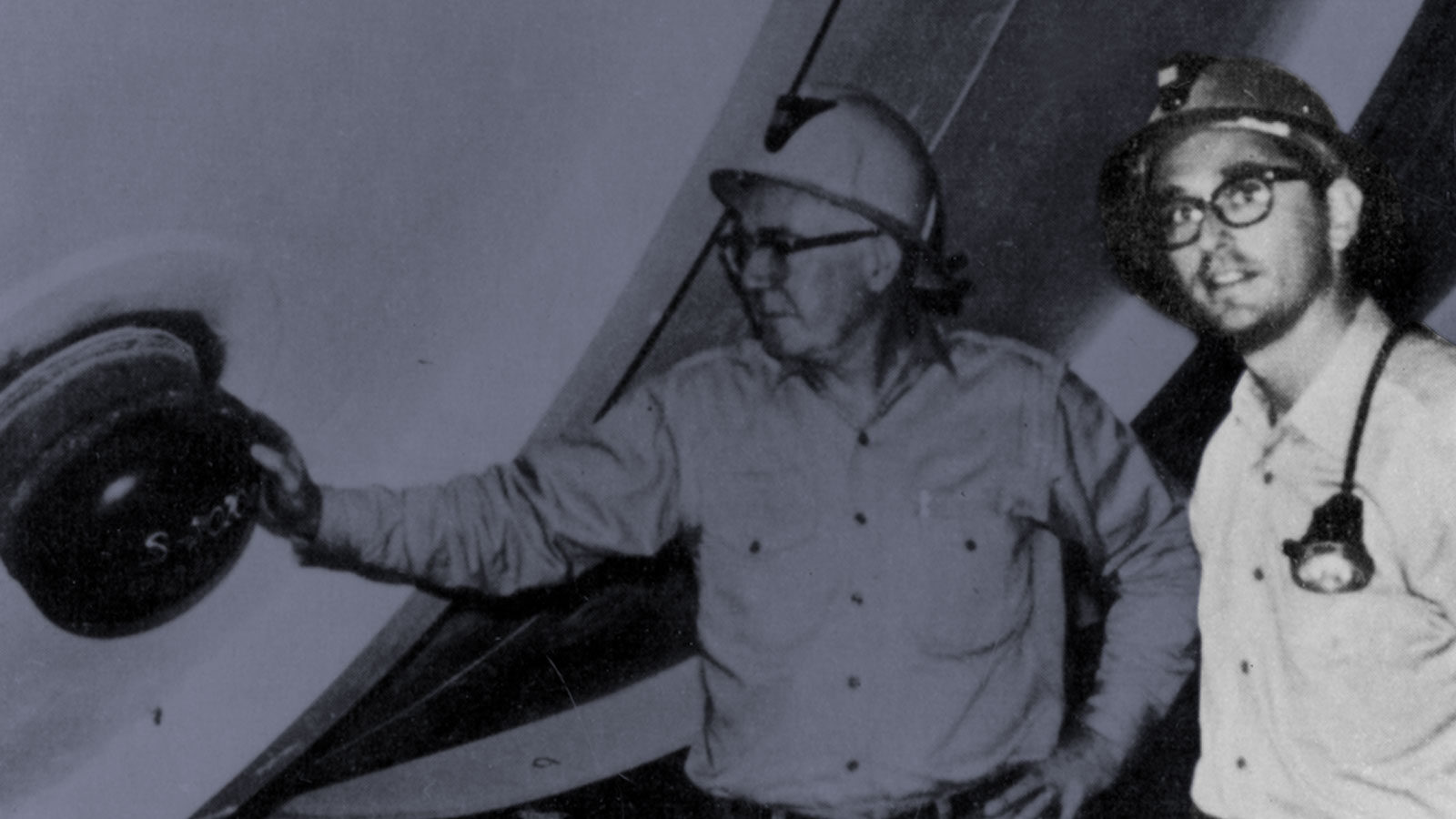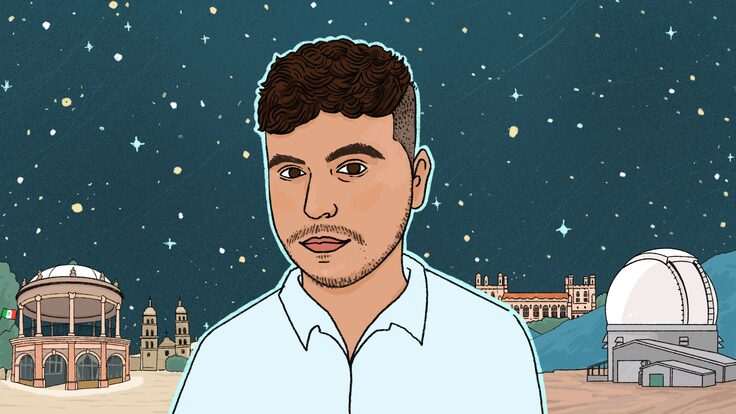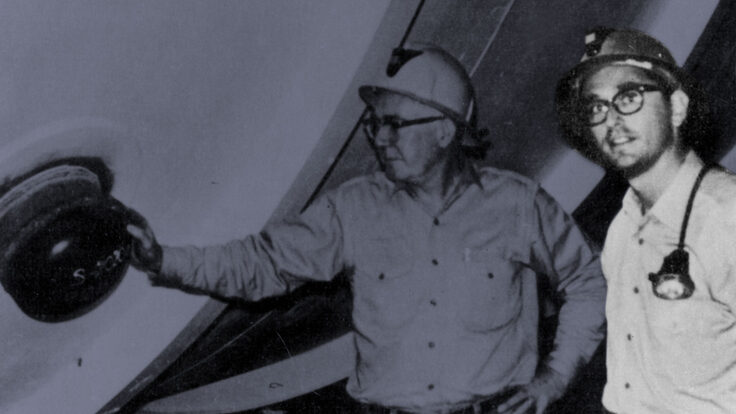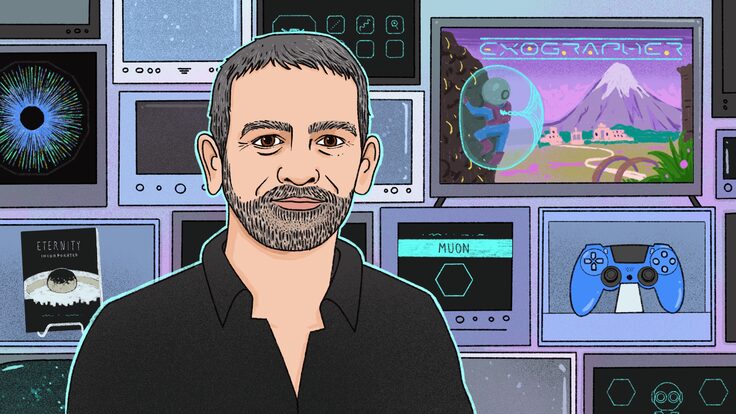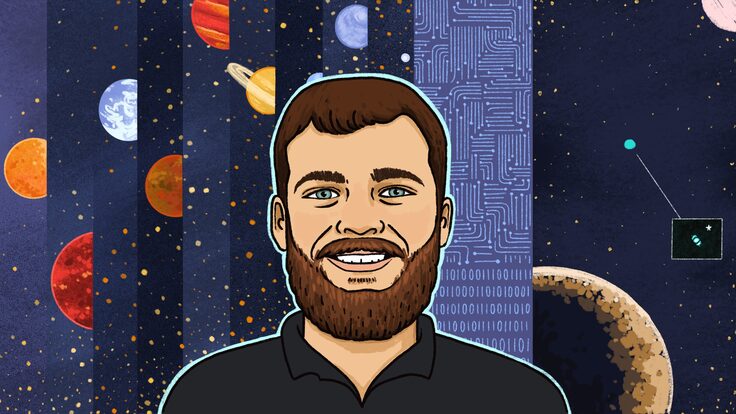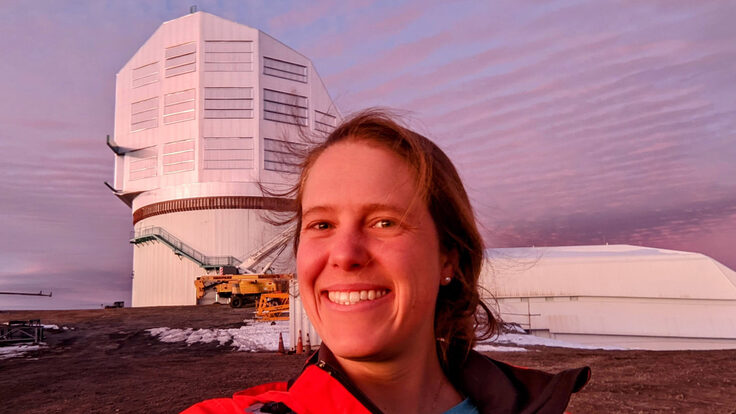In May 2009, NASA launched its final mission to repair and upgrade the Hubble Space Telescope. Astronaut John Grunsfeld, one of seven on the Atlantis Shuttle, carried with him some precious cargo—the wedding bands of John and Neta Bahcall.
“John [Grunsfeld] called me and asked if he could take something of John’s to the Hubble,” says Neta Bahcall. “He said, ‘John was such a hero to me, and the Hubble wouldn’t be here without him.’ He wanted to take something personal. So, I gave him our two wedding rings.”
John Bahcall had passed away just four years earlier.
It was a fitting tribute to the man who was instrumental in developing the Hubble Space Telescope, then in successfully lobbying Congress to continue servicing missions. The telescope, launched in 1990, continues to collect striking images of nebula, stars and distant galaxies. But the Hubble was just one of hundreds of projects in which Bahcall was involved. His dedication to scientific pursuit knew no bounds and cut across the field of astrophysics.
Falling in love with physics
John Bahcall was born in Shreveport, Louisiana, in 1934; attended Louisiana State University on a tennis scholarship; and studied philosophy with an eye toward becoming a rabbi. His career goals took an unexpected turn when he transferred to the University of California, Berkeley, where he took his first-ever science course—a physics class—and “fell in love.”
He went on to do graduate work at the University of Chicago and Harvard, where he completed his PhD in 1961. Five years later he married Neta, whom he had met at the Weizmann Institute in Israel when she was a graduate student in physics. Today, she is the Eugene Higgins Professor of Astrophysics at Princeton.
Over his 40-plus year career, Bahcall exhibited a strong desire to understand the complexity and structure of the universe. He made numerous and lasting contributions to the fields of astrophysics and neutrino physics. He worked on galactic modeling, dark matter, neutron star structure, stellar environments, and solar neutrinos.
He wrote hundreds of scientific papers with dozens of scientists, including Neta; collaborated with Nobel Laureates; wrote books; and earned numerous awards and accolades. A long list of fellowships and scholarships were established in his name, including the Davis-Bahcall Scholars Program at the Sanford Underground Research Facility. But he is, perhaps, best known for his work on the Standard Solar Model and the subsequent solar neutrino problem.
“John was very prolific, very dynamic,” Neta says. “He worked hard and loved everything he did in science. He always said, ‘I don’t know why they pay me to do the work. I will do it for nothing.”
The mystery of the missing neutrinos
In the early 1960s, Raymond Davis Jr., a chemist from Brookhaven National Laboratory, approached a young John Bahcall, then a postdoctoral fellow at CalTech, with an idea to capture neutrinos, small, ghostlike subatomic particles, from the sun. Both scientists were interested in better understanding the inner workings of the sun—essentially, what makes it shine—and began a partnership that would last into the early 21st century.
Bahcall, already a well-respected theorist, calculated the expected solar neutrino flux, creating the Standard Solar Model, and together he and Davis proposed a way to find solar neutrinos—build a huge steel tank deep underground in a gold mine and fill it with 100,000 gallons of chlorine. Davis built the experiment in 1965 in the Homestake Gold Mine in Lead, South Dakota, and by 1968, the first results were in.
But they were perplexing. Davis saw just one third the number of neutrinos predicted by Bahcall. Where were the missing neutrinos? Was the experiment wrong? Was Bahcall’s theory wrong? Could both be wrong?
Davis’ results created one of the great mysteries in physics at that time, the solar neutrino problem. And the work of both Davis and Bahcall came under intense scrutiny from the scientific community.
Now a Nobel Laureate, physicist Art McDonald was still a young graduate student at CalTech’s Kellogg Radiation Laboratory when Davis published the first results.
“From the very beginning, the results were about three times lower than John’s predictions. Thereafter, there was significant attention paid to this discrepancy,” McDonald says. “And John spent a lot of time studying in detail the theory he had put together.”
Experimental physicists defended Davis’ results, believing there must be a problem with the theory, while many astrophysicists believed the theory was correct and, thus, there must be a problem with the experiment.
“Even though John was a theorist, and Ray an experimentalist, they worked together to combine the experiment and the theory,” Neta Bahcall says. “John wanted to understand the experiment and how it worked; Ray was interested in the calculation and how to improve it. They worked together beautifully, and they became very, very close friends.”
The mystery of the missing neutrinos would stymie scientists for decades, but it propelled the field of neutrino astrophysics. Neither Bahcall nor Davis gave up on their work. Rather, they continued to refine theory and experiment.
The discovery
In 1998 and 2000, three decades after the Davis experiment’s confounding first results, the Kamiokonde experiment in Japan and SNO experiment in Canada, respectively, discovered that neutrinos oscillate—or change flavors—between electron, muon and tau. The discovery resolved the solar neutrino problem, leading to a share of the 2002 Nobel Prize in Physics for Davis.
“Many scientists believed the prize should have been shared with John. But the Nobel Committee is constrained to award only three people,” says McDonald, whose work on SNO later led to a share of the 2015 Nobel Prize in Physics. “John was so gracious about it. Along with other researchers, he thought it was wonderful that Ray received the Nobel.”
In his Nobel speech, Davis himself called out the significance of Bahcall’s contributions to the field of neutrino astrophysics.
“John Bahcall deserves special mention,” Davis said. “He has been the keeper of the standard solar model for nearly 40 years and has been and continues to be a major force … in promoting the solar neutrino experiments and making other tests of the solar model. It is clear that without the point of reference that the standard solar model provides, there would be no solar neutrino problem. The collision of theory and experiment over the life of ‘the problem’ made for a better experiment and better theory.”
For John Bahcall, the theorist behind the experiment, these results meant vindication. All this time, his theory had been correct.
“I felt like dancing. It was like a person who had been sentenced for some heinous crime, and then a DNA test is made, and it’s found that he isn’t guilty. That’s exactly the way I felt,” Bahcall said of the discovery in an October 2003 interview with PBS Nova.
Mentorship
Bahcall’s passion for physics didn’t begin and end with experiments. He was also dedicated to mentoring students and helping them find success in their fields.
“He created the whole astrophysics group at the Institute, and there he mentored hundreds of postdocs and young scientists in many different fields of astrophysics, and many of them are now leaders in the scientific world,” says Neta Bahcall. “He was an incredibly good and dedicated mentor. When he passed away, some of them told me they felt like they lost their father. That’s how dedicated he was to their success. He really cared about all of them.”
John Wilkerson, now principal investigator for the Majorana Demonstrator Project, was a young scientist and part of a team hoping to build a gallium-based neutrino experiment when he first met John Bahcall.
“He was the theorist, the expert on neutrinos. He was extremely engaged with experiments,” Wilkerson says. “But he was also great working with young people, with educating the next generation. He would go out of his way to talk to young people and encourage them.”
As a graduate student, Jaret Heise was part of the SNO experiment and gave a presentation on its status. In the audience, John Bahcall listened attentively.
“He asked about some detail of the detector calibration and expressed his fervent enthusiasm for the SNO experiment,” says Heise, now the director of science at SURF. “I suspect this interaction resulted in my name being added to his (likely extensive) contact list and my receiving a personalized copy of one his papers on how the sun shines.”
The inscription on the paper Heise received mentioned X-rays; Heise suspects Bahcall may have confused him with someone else. “But no matter,” Heise says with a smile.
To this day, the paper hangs on the wall of Heise’s office.
Frank Strieder recalls a similar experience, which happened to him while a graduate student in Germany in the mid-1990s.
“I published the results of my master’s thesis. A few weeks later, I received a pre-print of Bahcall’s latest work with a handwritten note that said, ‘I follow your work.’ There was not yet established electronic communication like today, so it took some effort to do that.”
Now the principal investigator for the Compact Accelerator System for Performing Astrophysical Research at SURF and Associate Professor of Physics at South Dakota Mines, Strieder focuses on nuclear reactions in stars, the source of solar neutrinos. Strieder also worked on the LUNA experiment at Gran Sasso in Italy, where scientists performed the first measurement of a nuclear reaction in the solar energy window.
“John Bahall celebrated that as a major breakthrough,” Strieder says. “He was a great influence in physics. He laid the foundation of the problems. He urged us as experimentalists to improve our measurements. He gave us the motivation to do that.”
Bahcall’s generous nature extended to his own family as well, says Neta Bahcall.
“He was a caring father. He was very close to our kids. We still think about him and talk about him all the time. I mean, we still feel as if he’s alive with us in some way,” she says.

The legacy
Over a long career, Bahcall never lost his sense of wonder. His contributions to fundamental research are visible in everything from the solar neutrino problem to galactic structures to dark matter to the development of the Hubble Space Telescope.
He encouraged scientists to test and refine theories and experiments. And he was peerless in his advocacy for fundamental research. His impacts on physics research did not end with his untimely death in 2005; rather, his tireless efforts continue to influence and inform existing and new experiments.
“He was like a godfather,” McDonald says. “A senior mentor to those studying neutrinos from the sun. He not only wanted to know the answer to the solar neutrino problem, but he also wanted to know what other experiments were addressing.”
One of those experiments is the Ice Cube Neutrino Observatory in Antarctica. Led by the University of Wisconsin-Madison, the experiment discovered high energy neutrinos produced from cosmic rays using a gigaton neutrino detector that stretches to a depth of nearly 2,500 meters into the ice.
Their discovery was due, in part, to the Waxman-Bahcall Bound, a model developed by Eli Waxman and Bahcall for measuring the flux of high-energy neutrinos in cosmic rays.
“Most of Bahcall’s calculations have stood the test of time,” Tremaine said in his memoirs of John Bahcall.
“The fact that he made these calculations, the fact that he kept improving them enabled neutrino experiments to move forward by at least a decade,” Wilkerson says.
Bahcall’s passion for physics and scientific discovery was profound—even SURF benefitted from his passion. In the early 2000s, Bahcall chaired the National Underground Science Laboratory Committee, which identified the Homestake Gold Mine as the best place to build the facility. In 2008, SURF paid tribute to his legacy when it created the Davis-Bahcall Scholars Program. It is a testament to Bahcall’s greatest ambition: to encourage and mentor students on their scientific journey.
“In science we are often standing on the shoulders of the giants who came before us. John Bahcall is one of those giants,” says Mike Headley, executive director of the South Dakota Science and Technology and laboratory director of SURF. “Here at SURF, we are immensely grateful for his legacy, and for the inspiration he leaves for future generations of researchers.”
Back to Earth
In preparing to carry the Bahcalls’ wedding rings into space, Grunsfeld fused them together. Today, Neta Bahcall wears them around her neck on a gold chain.
“Friends asked, ‘Oh, aren’t you afraid they’ll be lost in space?’ And I said, ‘No. And even if they were lost in space, what a pleasure to have them out there.’” Neta pauses, then smiles. “Yes, that would be amazing.”
Neta carries one other keepsake from John. A decades-old voicemail message.
“Sometimes John would call and leave a message. He’d say ‘I love you’ in Hebrew then hang up. So, when he passed away, I kept it in my messages.” One of her children turned it into an email notification. “So, now I hear him say ‘I love you.’ In the beginning, I cried every time I heard it. Now, it’s so nice to hear it all the time.”
Editor's note: A version of this article was originally published by Sanford Underground Research Facility.



